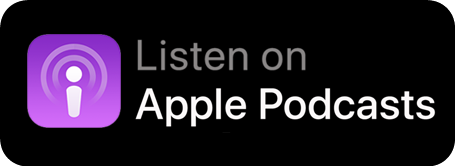I used to have this terrible habit of chewing on the ends of pens or on pen caps.
It definitely wasn’t because I was hungry and it’s not that they tasted good—I just didn’t even realize I was doing it (and probably ingested quite a bit of plastic as a result. Bummer).
Often I wouldn’t notice that I had done it until I realized that the cap no longer functioned to cover the point because I’d chomped it out of shape, or someone would tease me about obviously not having enough to eat.
That habit fell away from me without me really noticing it when I started frequency work, and I’m sure my intestines are thanking me for it still.
Why is it that some habits are easier to break or to establish with just some focused attention, whereas others take a lot of willpower and sometimes even then just don’t budge or stick?
In this week’s episode (#113), Where Do Habits REALLY Come From, Dennis and I discuss where bad habits can come from and why they can be so hard to break and why some good habits are so hard to establish even when we intellectually and emotionally want the outcome that establishing them will give us.
The GFC (Group FREQUENCY CALIBRATION®) at the end will help you begin to become more aware of when you’re engaged in a habit, and give you more distance from your habits so you can start to break the bad ones, as well as clearing some of the distortion patterns preventing you from establishing good habits that you want.
Without clearing the distortion patterns, some habits are next to impossible to break or to establish, no matter how much we effort we put into it!
Let’s rise together.
Karen
SUMMARY:
• A habit is a pattern that operates on the mental, emotional, and physical levels, and using willpower alone to break a bad habit is extremely difficult. Sheer will is often not enough to overcome a habit.
• Lineage is one of a number of things that inform our habits — both good and bad ones. If a lot of negative distortion patterns come from the lineage, a habit creates an outlet for the distortion. A bad habit can make us feel better about continuing to let the distortion pattern run through us.
• Breaking a habit is much easier if you release the distortion pattern causing it. Habits can become quite entrenched, and frequency work helps put you in the observer position so you can see yourself — and your habit — from a distanced perspective. You see the habit, how much you do it, how it impacts you and others, and what you receive emotionally from doing it.
• Removing lineage distortion patterns frees you to more easily quit the habits they cause. Your compulsion for that specific behavior will be diminished once you release the distortion causing it, easing your confirm-deletion process from the physical.
• Good habits have a hard time settling in with certain distortion patterns running. Food and healthy eating, for example, provide us with big challenges. Food was long seen as a symbol of abundance — more of it was a good thing. Removing the distortions around food from the lineage makes it much easier to establish good habits around eating.
• The bottom line? When there’s nothing for the bad habit to sit on, it can dissolve more easily. Effort and awareness are still required in order to catalyze change, but breaking distortion patterns makes everything else we’re trying to do on the physical, mental, and emotional fields easier.


